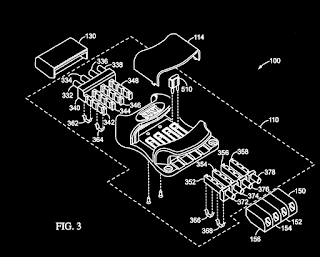 |
| Executive Chef Jess Barbosa enters Culinary Hall of Fame |
On June 30th, 2017, the Kansas City Star reported on Chef Barbosa's recent induction into the American Academy of Chefs’ Culinary Hall of Fame. On July 11th, 2017, Mr. Barbosa, 84, achieved a lifelong dream. His peers at the American Culinary Federation recognized his long body of work during an induction ceremony in Orlando, FL..
To me, Chef Barbosa is both, a man of great integrity and stature and my friend's dad. Yes, Chef Barbosa is Chuck Barbosa's dad.
Visiting Chuck's house during the 90s was great. I remember a home full of love where Chef Barbosa was the unbreakable foundation while Mrs. Barbosa was the sweetness that made all blend incredibly well. It goes without saying that Chuck and I were trouble. But no matter how far we pushed boundaries, Chuck's parents were always welcoming.
So, as I serendipitously found the article about Chef Barbosa's well deserved recognition, I had to share the moment with the world. I am so proud of Chuck's dad.
 |
| Suave! |
For today, though, I just want to celebrate. I want to reach out to his dad and want to enjoy looking back at yet another article on Chuck's car. Why not double dip?
By the way, did you hear that Chuck is selling his car? While the installation is probably different than the one in the following pictures, it is surely world class. After I left the US, Chuck went on to win anything there was to win during the late 90's. Then, hoping for a renaissance Chuck took his car to Gary Biggs. As bad luck would have it, the project never progressed due to a dozen different difficulties. So now, almost 20 years after a wonderful golden era, Chuck has reopened his time capsule and is making it available to anyone wanting to own a piece of history.
 |
Chuck Barbosa and his Plymouth Laser
have learned from
mistakes.
Nowadays few mistakes are made.
|
And now, the article from a once-in-a-lifetime magazine issue. Enjoy!
Mutual Competitor
Mobile Sound Competition '96 Annual
Staff Writer
 |
A totally detailed engine compartment
makes this look like a
trailered car,
when in fact it is driven daily.
|
Mutual funds representative Chuck Barbosa has made many attempts at a successful competition season. Since he first got going in 1991, several different people, shops and installations have gone into creating what is now a very viable Plymouth Laser IASCA and USAC competitor.
 |
| A Pioneer ODR system operates the rig from the cockpit without Chuck's having to take his eyes off the road. |
Chuck took advice from judging duo Chris and Melissa Owen, who suggested moving away from door-and-dash mounted speakers and trying kick panels. The suggestion was strange sounding to Chuck at the time and just as foreign to his installers. However, after listening to pro-competitor Alberto Lopez's sweet-sounding Sentra with its kick panel locations, Chuck went for it. This was his first step in a series of metamorphic stages before the real fun started.
 |
| A very well put together rear hatch looks invisible with the pieces in place. As pictured, it has "world-class" written all over it. |
With the new-found help of Pepe and Alberto Lopez of Stereo West, Chuck found himself moving from a top-five competitor to a best-off-show regular. Most recently, he won the best-off-show at the 1994 IASCA triple point MidWest Show-down held by Audiosmith. At the same event, he also scored best Sound Q and best Sound Q Plus -a category in which Chuck suffered most in previous installs. It is the kind of winning success that enabled Chuck to earn over 70 points for the '95 season. Chuck likes to point out that he not only found a great installer, but a great friend, too. Alberto Lopez, as has been both for him throughout competition -even when the chips were down.
 |
| Mobile Sound Competition's Annual '96 Winners Edition cover page |
 |
| Mobile Sound Competition's Annual '96 Winners Edition page 96 |



















































